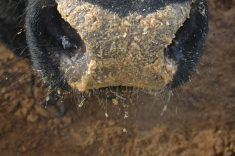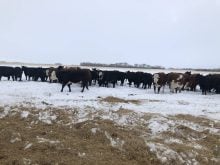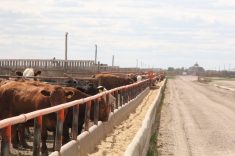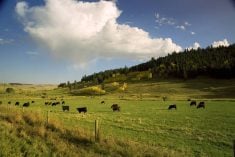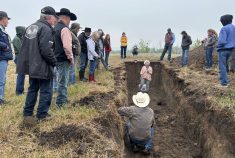When it comes to traceability the federal government always seems to be putting the cart before the horse. A case in point is the announcement last month of $20 million for the Livestock Auction Traceability Initiative (LATI).
The money is to help auction markets, feedlots, backgrounders, buying stations and anyone else who commingles large groups of cattle get set up to scan ID tags and track cattle.
It won’t cover past purchases, only those made after April 1 when the government starts accepting applications. Eligible expenses range from plans and construction costs to permits, handling equipment and verified RFID readers.
Read Also
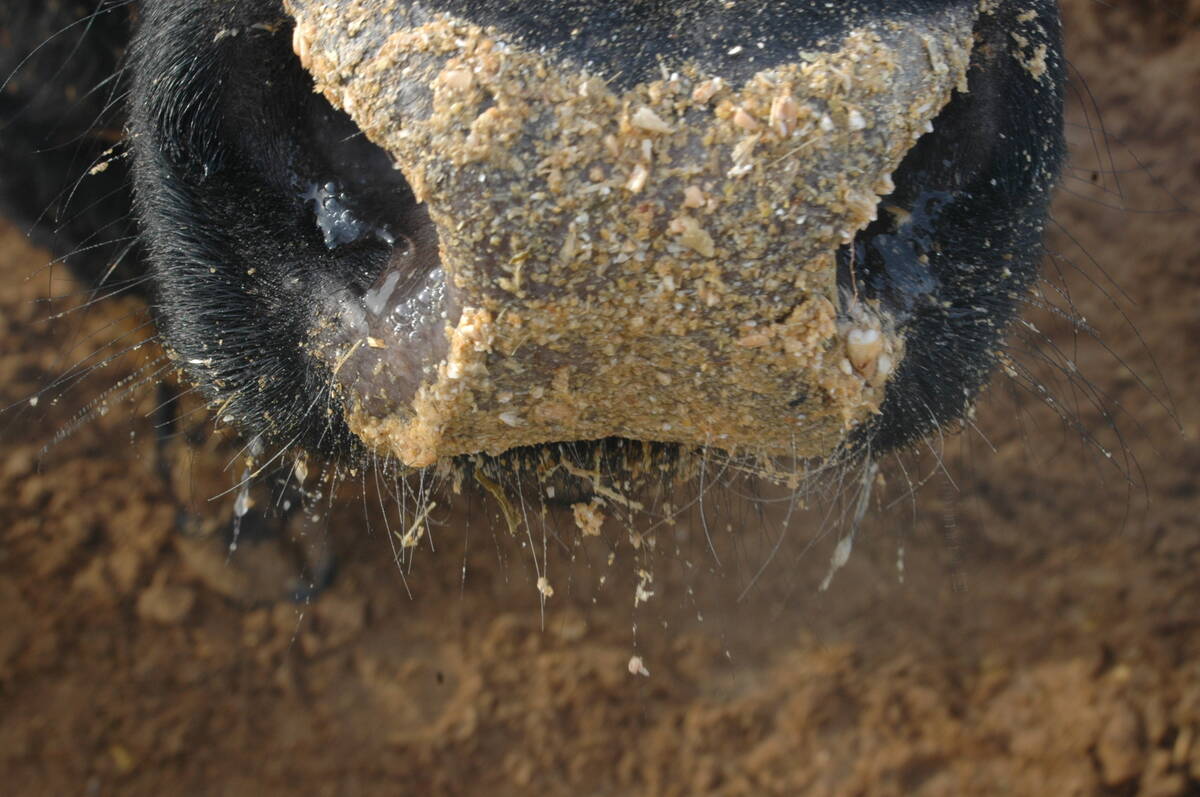
Feed grain update for Canadian beef producers
Factors affecting the feed grain market and what it means for Canadian cattle feeders
This is all very nice but it would be less confusing if auction markets and feedlots knew exactly what they should be equipping for, before they start spending on any new equipment. It’s a bit like being pushed to buy a new truck with no idea if you need it.
Perhaps if governments weren’t in such a hurry to impose traceability on the livestock industry they would have set the rules before they start handing out money.
Everyone knows the big picture. It is the details that are lacking and will remain so until industry and government agree on the national performance standards for cattle.
Jim Abel, the president of the Livestock Markets Association of Canada, was obviously caught off guard by this announcement. So much so that LMAC issued a press release to air its concerns, something that is out of character for this group.
Abel says it is a bit like being told to build a house without any plan for how big or fancy it has to be. In terms of traceability markets still don’t know if they will read cattle only when they arrive or when they leave, as well. If the government listens to them it will be once when they arrive. The buyers should record the next stop in the line. If markets have to read the cattle out as well, it will increase their costs considerably in terms of the scanners they have to buy, the setup and the number of people who will be needed to make it work.
Another unknown is the standard of accuracy that will be required when the regulations are published. The Canadian Cattle Identification Agency’s Phase 1 study, done with the support of LMAC, found markets had a hard time scanning 95 per cent of the cattle when they tried to move along at the normal pace of commerce. Overall they managed 93 per cent, but individual markets had bad days when they traced as few as 60 per cent of the cattle, and good days when they caught them all.
Phase 2 is testing how well the software involved in collecting tag numbers integrates with a market’s own management software. A final report is expected in June.
Alberta did its own study to see how well one company’s equipment works in different markets. The province still hasn’t released the results. However, sources within the auction community report scanning rates were slightly higher than in the federal study, primarily because time was taken to rerun cattle missed on the first pass. The cost/benefit results on that one should make for interesting reading.
Abel, a co-owner of the Stettler, Alta., market, believes a 95 per cent read rate is achievable. What worries him is it won’t be enough to satisfy Ottawa bureaucrats. If the target is set at 100 per cent it will take a lot more time and money. And he’s reluctant to invest any more money until he knows what’s expected of him.
He says there is no real benefit to the markets from traceability so it is their position that government should pay 90 per cent of the costs, which still leaves them covering extra wages and maintenance.
In reply the government in its LATI announcement said it will cover 80 per cent of eligible expenses up to $100,000 per applicant.
That doesn’t buy very much in a big outfit. The example application on the LATI web-site budgets $16,000 for a reader, $18,000 for gates, $60,000 for construction costs and another $10,000 for labour putting it easily over $100,000.
It looks like feedlots will be the first link forged in the traceability chain sometime this year, so it is likely they will be lining up first for this program. LMAC is advising members to wait and apply for funds when the rules are determined. That will be hard to do. A mere 200 applications at the maximum will empty the kitty in this purported three-year program.
The LMAC may support the concept of traceability but if the government dumps too much of the cost on margin players like auction markets and feedlots I think we all know who will get the bill in the end.
$20,000 million is a nice round number, but it isn’t enough.
———
$20million isn’tenough toequipfor traceability



